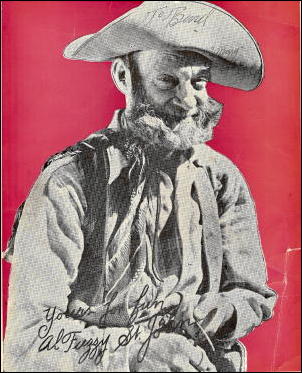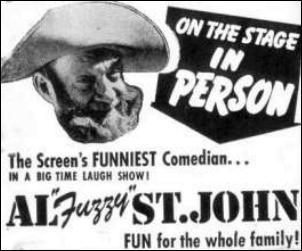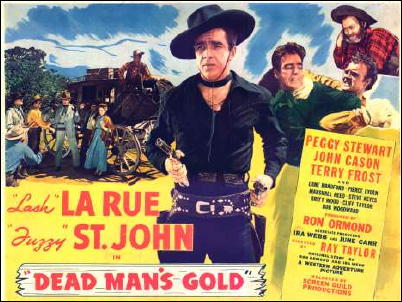
"Appearing in person at the Orma Theater," Postalwait recalls
country-life entertainment after finding autographed photo
By Bob Weaver
Calhoun was a world far removed from the coming of television, although many US communities had TV stations in the late 1930s through the 1940s.
Rural America depended on radio, record players, circuses, stage shows and beer parlors for entertainment, until TV signals came to the county in the early 1950s, a few folks purchased bulky, small screen black and white TVs to receive a single channel.
County music stars and movie personalities made personal appearances in Calhoun at the Kanawha Theater in Grantsville, the Orma Theater in Orma, the Log Cabin Park at Mt. Zion and other wide places along the road. Even Arnoldsburg had a movie house.
Many of the best-known bluegrass and country music groups came, but tagging behind were movie "stars" like Al "Fuzzy" St. John and Johnny Mack Brown.
Calhouner Dick "Burl" Postalwait, shuffling through some boxes, found his autographed photo of Al "Fuzzy" St. John (above) appearing in the late 40s at the Orma Theater when Postalwait was a kid growing up on the West Fork.

Al "Fuzzy" St. John (1893-1963). who started in silent movies, was the comical sidekick to cowboy movie heroes from 1930 to 1951.
St. John, who adapted to scruffy character parts to make a living, was a slender, sandy-haired, handsome man, and a remarkable acrobat.
St. John played "Fuzzy Q. Jones" in the Billy the Kid series starring Bob Steele, later appearing as sidekick to Buster Crabbe and Lash LaRue.
The ultra-low-budget westerns, common to Calhoun's movie houses, took only a bit more than a week to make. St. John appeared in hundreds of them.
The Orma Theater operated in the 1930s through the 50s, mostly showing old westerns.
"People came out of the hollers to see Flat and Scruggs, Bill Monroe and just about anybody that appeared on stage," said Postalwait.
While Washington District kids went to the movie at Orma, some of their parents enjoyed the entertainment at a number of beer parlors from Nicut to Stinson, many having country bands on the weekend.

Postlwait recalls taverns at the mouth of White Oak, the Dew Drop Inn, Duke Moores near Stinson and the "County Line," a few feet from Clay County.
"It was a big thing to see radio, country music and movie people in person," Postalwait said, "Many of them continued to be booked at the Mt. Zion Drive-in in the early 50s. They'd perform from the top of the projection booth."
| 


